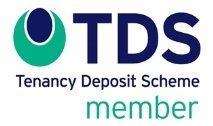William Grant & Partners
Property Management & Letting Specialists
We know the winning formula to let your property...
10 simple steps to letting your property
- Step 1: Get an accurate valuation
Choose an experienced local letting agent to give you an accurate rental valuation.It's important to ensure the price is right to attract the right tenant.
- Step 2: Choose your service
Review the service options available, and consider how involved you want to be with your tenant and/or property.Having to juggle maintenance issues, collect the monthly rent and deal with other responsibilities that may not suit your current lifestyle.
- Step 3: Find your tenants
Finding the right tenant (one in the best position for you) can be time consuming and costly. Being a William Grant & Partners landlord will give you high profile advertising and give you access to a large tenant database.
- Step 4: Arrange your viewings
Keeping your property clean and clutter-free as possible will be more attractive to prospective tenants.An experienced team member will accompany all prospective tenants on viewings arranged by William Grant & Partners.
- Step 5: Negotiate and agree an offer
Your letting agent will handle all negotiations between you and prospective tenants. William Grant & Partners strive to get you the best rental price, length of contract and tenants.
- Step 6: Credit checks and references
Running credit checks on prospective tenants helps to ensures your property will be sucure.William Grant & Partners uses strict referencing procedures carried out by independent experts.
- Step 7: Sign your Tenancy Agreement
This document outlines the agreed responsibilities of both you and your tenant. It is important that both tenants and landlords take the time to read this carefully before signing.
- Step 8: Inventory
An Inventory is a detailed list that itemises the contents and condition of the property at the time of the tenant moving in. It must be agreed and signed by both the tenant and the landlord.
- Step 9: Take the deposit
Once your tenant has paid the deposit in full, they have secured the property. Their deposit will be held against possible damage to the property, which will be checked against the Inventory at the end of their tenancy.
- Step 10: Your tenants move in
It's important to build a good relationship with your tenants; small gestures like supplying user manuals for appliances will really help. Need some landlord advice? Contact us and we'll be happy to help.
Landlords obligations.
As if letting a property wasn’t a daunting enough task, the huge amount of legislation and regulation can be confusing and worrying for landlords. Please find important information here about Inventories, Assured Shorthold and Common Law Tenancies and Tenancy Deposit Schemes
Let’s talk about your property
Fill in the form or call us
020 8550 8888.
William Grant & Partners
Residential Property Management
and Letting Specialists
About Us
Established in 1989 William Grant & Partners is a leading independent letting agent providing a comprehensive service to our customers.
Areas we Cover
Havering
Romford
Chadwell Heath
Rainham
Barking
Barking & Dagenham
Redbridge
Barkingside
Newham
Waltham Forest
Enfield
Contact us
Tel: 020 8550 8888
Email: info@williamgrant.co.uk
William Grant & Partners
Rainham House
Manor Way, Rainham, Essex
RM13 8RH
VAT Registration No: 887 5820 66
William Grant & Partners may record calls for training and quality purposes
We are Propertymark members.
Menu
William Grant & Partners






